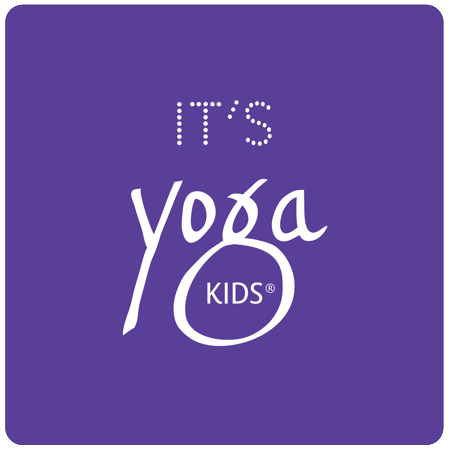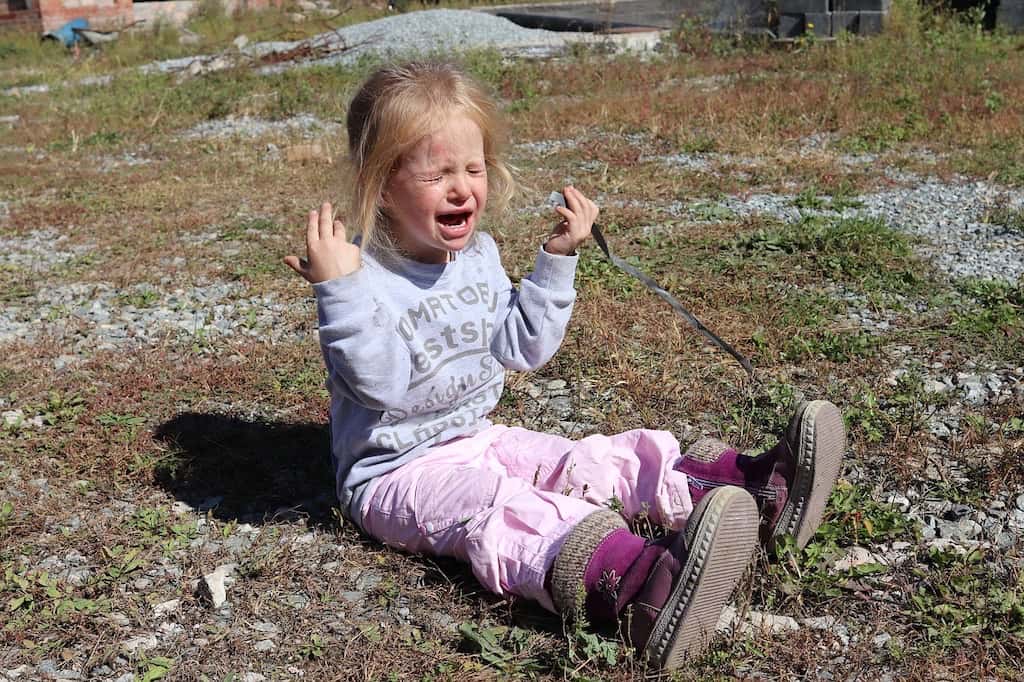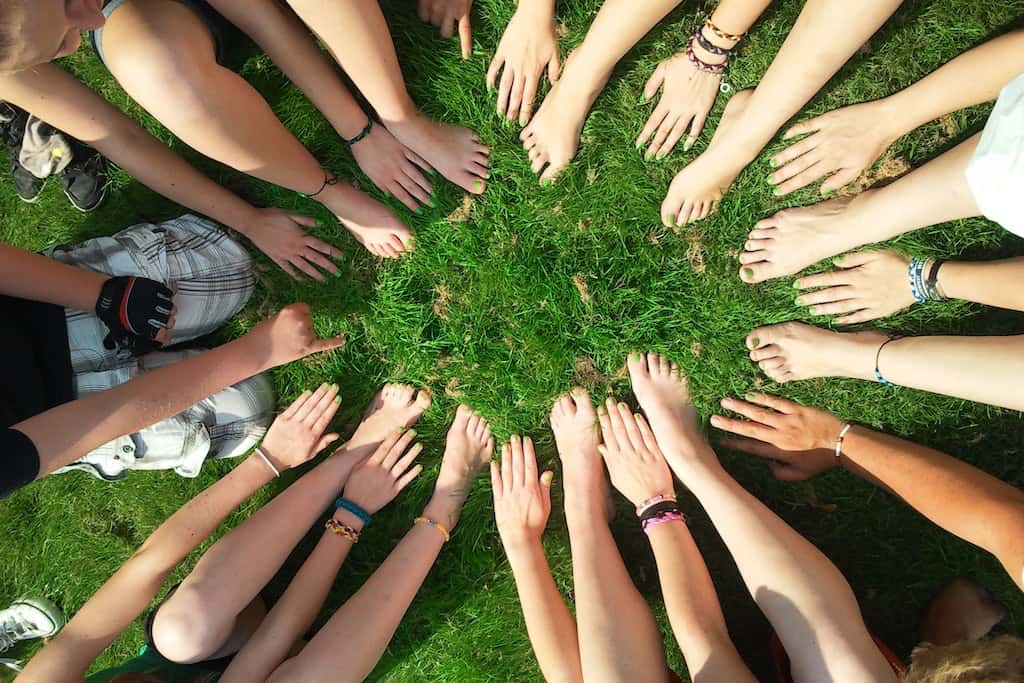Press PLAY to listen to this post.
This week has been a lot to handle with the Israel-Hamas war. One of the hardest parts of this devastation is its effect on children. They are likely to hear about it, so it’s best to talk about it.
Here’s how:
1. Get the facts. Kids have a lot of questions so make sure you have the facts. It’s helpful to have a basic understanding of what’s happening, even if you don’t have all the answers. Try The Associated Press and Reuters.
2. Find out what they know. Ask a couple key questions in a quiet time, (in the car or at dinner table is better than bedtime) Have you heard about what’s happening in Israel and Gaza? How does it make you feel? Keep checking in and limit social media use.
3. Be clear and concise. People are fighting about who’s in charge. Use the word “Hamas” rather than “Palestinians” when talking about who Israel is at war with. In any conflict, there are multiple perspectives and history to consider.
4. Breathe together. Instead of spiraling out, try breathing together. Hold hands. Breathe in to the top of your head (no more air can come in). Hold for a few counts. Then, breathe out slowly to your toes (no more air can go out). Repeat 3-5 times or until you feel calm.
5. Practice peace. Try the sensory countdown. Notice 5 things you see, 4 things you feel, 3 things you hear, 2 things you smell and 1 thing you taste. Exercising all your senses stops the swirl and helps you focus into the present moment, now.
A primary principle in yoga is to Do No Harm (ahimsa). Practicing yoga can help you access compassion for suffering and calm stress.
We want to be equal in our humanity. Peace on earth can be a reality when each person on this planet comes to peace within themselves.
Get trained. If you live or work with kids, you can model the skills your children need to succeed and meet the challenges of their time with confidence.
Press PLAY to listen to this post.
Winning first place is best, right? I think of The Olympics when the winner gets the gold. Hooray! The bronze is #3, but is a winner because they are on the podium. The loser is second place. The silver medalist never looks happy to have missed the gold — to have missed being be #1.
What does it mean to be a second place winner? It means you still won — kinda, but you are the runner up. We all love the rewarding feeling of achieving a goal, but coming up short may not be such a bad alternative.
One study found that about half of silver medalists were alive at age 80, compared to only a third of gold medalists. But they also found that second-place athletes pursued higher-paying occupations after the Olympics, while first-place winners went onto lower-paying pursuits.
When you're in second place, you have to fight. And that's where the real creativity comes out. This process can be incredibly motivating! Employing a Growth Mindset leads to higher overall achievement.
Finishing in second place could make you the real winner in the long run, according to one scientist. Those who win often do so because of a fluke and they actually have inferior skills — actually about five percentage points less skilled than those who came further down the rankings.
What about last place? Brock Purdy is an American football quarterback. He was selected by the San Francisco 49ers as the final pick in the 2022 NFL Draft. Unofficially, Mr. Irrelevant, he has risen to an undefeated record. In the 13 games Purdy has played at least three quarters under center, the 49ers are 13-0. The 49ers are the NFL's most dominant team to date in 2023.
How about yoga? Well, there are no winners or losers in yoga. It’s a self-competition so you can be your best. There is no end, only the practice so ranking is irrelevant. It’s all about how you feel. That’s the win!
Press PLAY to listen to this post.
Between the Golden Gate Bridge and Alcatraz, The San Francisco Fleet Week Air Show highlights The U.S. Navy Blue Angels performing a fully choreographed act. Over the water and in the air, these jets draw huge crowds and make deafening sounds — all to amaze!
With a minimum ceiling of 8,000 feet and visibility of three nautical miles, the Blue Angels can perform their "high" show, which includes all the acrobatic maneuvers. It’s quite a spectacle! The show is a full sensory experience that delights the eyes and ears and creates a sensation —actually a vibration. It’s felt in the body. Can you image what if feels like to be a pilot flying that high and doing all the tricks — upside down and flips?!
Well, in yoga we can feel that high with our feet on the ground or in the air. We get upside down and play with controlled breath which can make one feel blissed out — naturally. In addition to endorphins (the feel-good hormones) being released, that high you can get from yoga may come from a part of the body known as the endocannabinoid system (ECS) — substances naturally produced by the body that are chemically similar to active compounds in cannabis (marijuana).
Many teens are experimenting with alcohol and drug use. Some are “Cali Sober” — opting out of alcohol and choosing marijuana for it’s stress reducing effects. But what if you could get high without the substances?
This is why yoga. Not only could you “feel high” you could get stronger, stretch and stress less. You could learn the skills that you need to succeed that are not taught anywhere else. Is it worth a try to get your vibe high?
Press PLAY to listen to this post.
Toddler tantrums are actually a developmental milestone for healthy brain development. Next time your toddler loses it in a major meltdown, remember it’s normal, so skip the guilt and embarrassment. You are doing just fine.
How you respond to a tantrum can either escalate it or help calm it down. Here’s your role in co-regulating, so ultimately, your child can self-regulate.
Calm Steady — In the moment of a tantrum, the best thing you can do is be calm. Don’t escalate. Don’t negotiate. It only makes it worse. Instead, be the warrior parent you are and keep your cool. Say ‘OK’ to your toddler’s feelings. “I hear that you are upset about not having…”
Stay Strong — Toddlers are not in control, but you are. They feel safe when you are consistent, predicable and they can trust you with their “big feelings.” When they are safe, they feel calm. Your job is to maintain the boundary. “We’ll have more…later.” (Be specific if you can about when.)
Yes Power — Hearing ‘no’ is no fun for anyone. Shifting to ‘yes’ to hold the boundary and guide your toddler into their age-appropriate power is ideal. “We’re going home now. Do you want to walk or hop? You choose.”
Try these 3 steps to help your toddler calm down the next time they have a meltdown. Let me know how they work for you. You can also get our free guide: 10 Terrific Tools To Handle Tantrums & Moods.
Press PLAY to listen to this post.
September 22 is the Fall Equinox. It’s one of two times a year when the length of the day and night are equal. It marks the official end of summer and the beginning of Autumn.
This is not the time of year to pick apples, it is the time of year to let them fall.
A change in seasons often feels unsettling as we switch from more care-free days to new routines. Often, there’s no rhythm yet. September is full of extra administrative tasks with school forms, new playdates and after school program schedules. It’s a lot of details to manage.
If that stresses you out, 3 things may get you grounded:
1. Earthing. Feeling your bare feet in the grass or sand is soothing. Because the Earth has a magnetic field that provides the nourishment of free electrons. All sorts of benefits occur—when you go outside.
2. Yoga. Standing postures demand your full attention with both feet on the ground. It’s important to do yoga in bare feet to allow reflex zones to reach all body areas and organs connected to them. Plus it gives your toes space to move and breath.
3. Listen to what the birds are saying. Birds are the secret weapon to overcome anxiety. Their chirping sounds can comfort us, soothe our stress and bring us joy. You can listen on a walk or simply lying on your back after yoga while earthing.
The change of seasons is a sensory experience. Enjoy the color of the leaves changing and watch them fall to the ground. It’s also a good time to reflect on what you can let go of and bring into balance.





